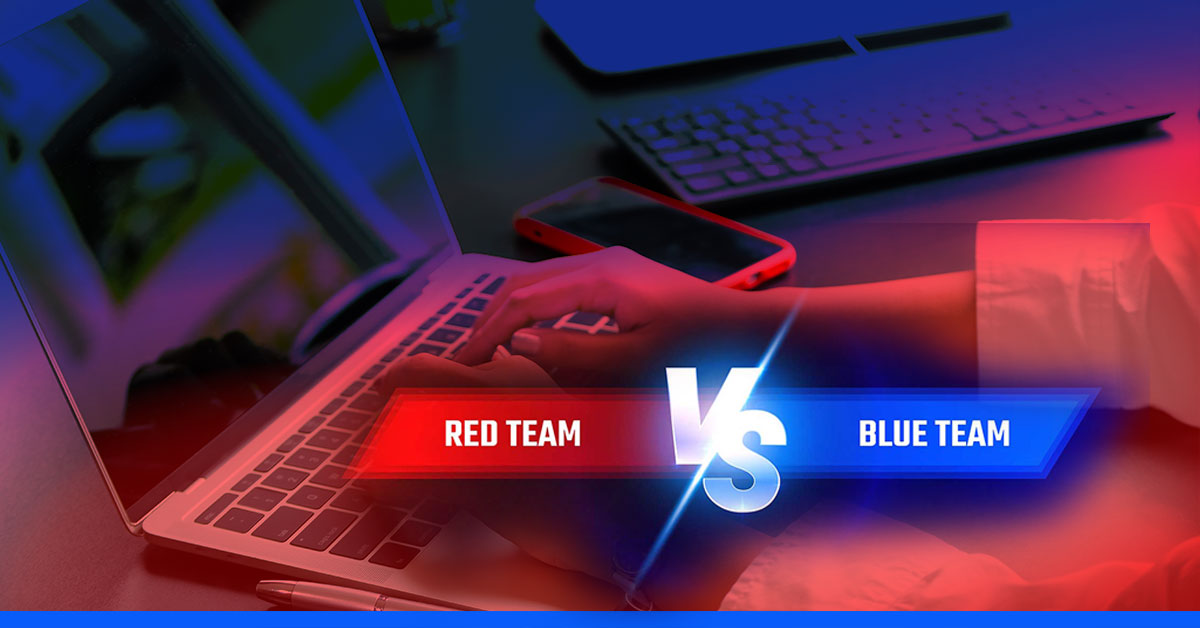How do Red Teamers and Blue Teamers Complement Each Other?
Given today’s cyber threat landscape, businesses must have the proper protocols, policies, and processes to keep their data safe, infrastructure strong, and, ultimately, make them resilient. The terms “Red Teamers” and “Blue Teamers” refer to two distinct groups of highly skilled security professionals who use different methodologies to analyze a company’s cybersecurity posture. This article will go over the key benefits of each team and how they can be combined to drastically boost the impact of a penetration testing project.

Table of Contents
What is a Red Team?
What is a Blue Team?
Red Team vs. Blue Team
How do Red and Blue Teams work together?
What is a Red Team?
A Red Team is a group of skilled security professionals or Ethical Hackers who assist organizations test their defenses by detecting weaknesses and launching cyberattacks in a controlled setting. The Red Teams are opposed to the Blue Teams, who work together to present a complete picture of the organization’s security readiness. In simple words, they simulate how a potential attacker would go about breaching cybersecurity measures. A Red Team can be a hired outside firm or an inside group that employs tactics to stimulate an outsider perspective.
Red Teaming is the technique of employing an adversarial or malicious hacker’s approach to challenge plans, policies, systems, and assumptions thoroughly.
What is a Blue Team?
A Blue Team is a group of professionals who analyze information systems to assure security, find security flaws, check the effectiveness of each security measure, and ensure that all security measures remain effective once they are implemented. They are in charge of designing and maintaining the company’s internal cybersecurity architecture.
Red Team vs. Blue Team
Red Teams are offensive security experts who specialize in breaking into defenses and attacking systems. On the contrary, Blue Teams are defensive security experts tasked with defending internal networks against all types of cyberattacks and threats.
How do Red and Blue Teams work together?
A combination of Red and Blue Teams can dramatically improve an organization’s security posture. The Red and Blue Teams are complementary such that the Red Team informs the Blue Team about the organization’s security flaws while the Blue Team works to improve the defenses.
A Red Team gives an overview of the organization’s vulnerabilities as well as recommendations for addressing the most likely attack routes used by an intruder to gain access to the network. Blue Team provides a more robust long-term view by increasing the organization’s defensive capacities.
Red and Blue Teams complement each other if employed correctly. The Red Team’s mission is to find flaws in the Blue Team’s present security plan, and the Red Team’s role is to report these flaws to the Blue Team, allowing them to improve the organization’s defenses. This knowledge transfer can happen as part of a post-exercise reflection or explicitly within the engagement by utilizing a Purple Team or mitigating element.
However, both of these teams have the same goal in mind: to strengthen the organization’s security posture. The Red Teams do this by attacking, whereas the Blue Teams do it by defending. While both Red and Blue teams can benefit an organization on their own, the potential for synergy between them can significantly boost the impact of a security evaluation.
How can InfosecTrain help?
Exploring your organization from an attacker’s perspective is an excellent method to see how effective your organization’s detection and response plan is. With so many breaches and ransomware attacks on the rise, it is evident that our strategies and technologies are not effective. You can enroll in InfosecTrain’s Red Team expert training course that will assist you in turning you into an influential Red Team expert capable of countering cyber threats and doing successful penetration testing to discover them. You can also enroll in our various security testing training courses to help you prepare well.







 1800-843-7890 (India)
1800-843-7890 (India)